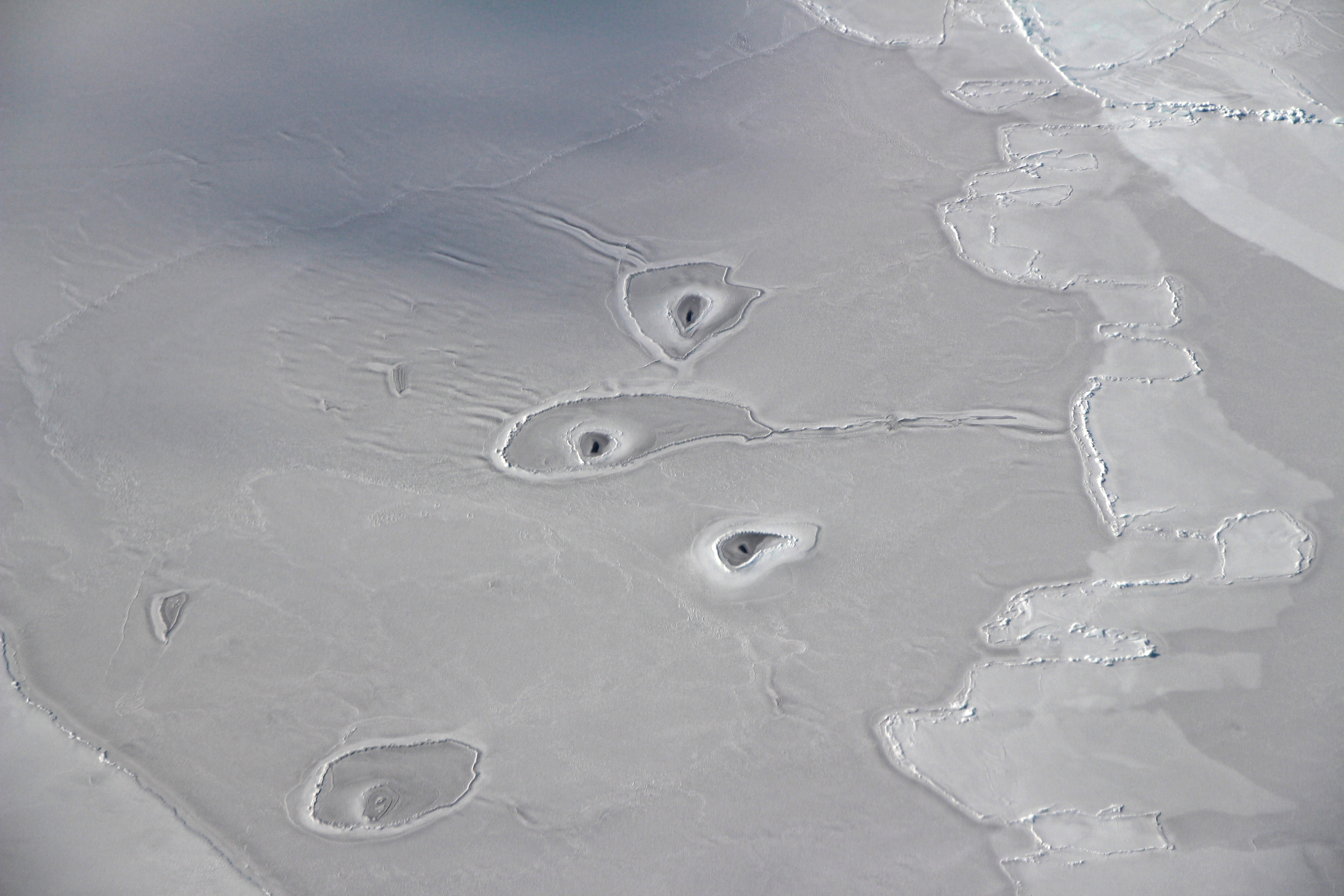Mysterious circles in Arctic sea ice have scientists baffled
“I have never seen anything like that before.”

Just when all the mysteries of the natural world seem to be answered, a pattern of Arctic sea ice circles comes your way.
Recently, scientists participating in NASA’s Operation IceBridge spotted curious circles in the Beaufort Sea, about 50 miles from Canada’s Mackenzie River Delta. Surrounded by silvery ice, three black holes are encircled by larger bulbous grey areas, like a nucleus in a cell.
The origin of these circles surrounding the holes? That’s something the scientists would like some help with.
“I don’t recall seeing this sort of thing elsewhere,” IceBridge mission scientist John Sonntag wrote from the field. Sonntag photographed the environmental phenomenon April 14 from the window of a P-3 research plane.
The team then consulted other scientists both involved in Operation IceBridge and located in the lower latitudes, asking if they could add some insight.
Don Perovich, a sea ice geophysicist at Dartmouth College, said that because the ice is young, it is most likely thin and pliable.
“This can be seen in the wave-like features of the middle of the ‘amoeba,’” Perovich said in a NASA press release.
Nathan Kurtz, an IceBridge project scientist, agreed with Perovich that the ice is thin, and notes that the grey color hints at little snow cover.
“I’m not sure what kind of dynamics could lead to the semi-circle shaped features surrounding the holes,” Kurtz said in the press release. “I have never seen anything like that before.”
Other scientists from the National Snow and Ice Data Center and the Cold Regions Research and Engineering Laboratory speculated that the holes could be breathing holes for seals. Water could have spouted out of the holes, forming the circles. Or, the holes could be caused by warm water making its way up to the surface.
This is Project IceBridge’s tenth year in the Arctic, where it conducts flyovers to document changes happening in one of the most remote places on earth.
This month, NASA asked the public to send their theories explaining the mysterious circles. The answers ranged from scientific (a pod of whales; volcanic activity; thawing methane) to the, well, less-than-probable (Russian submarines; meteorites; tricky NASA, this is actually a picture of Mars’ surface).